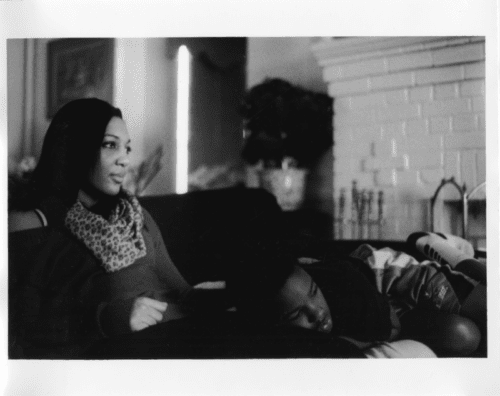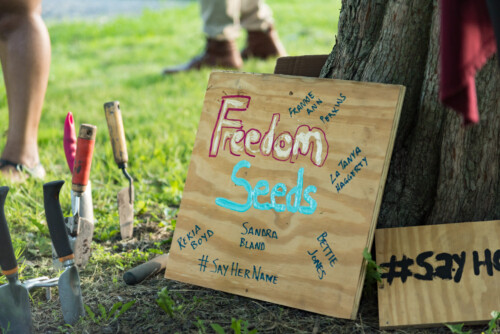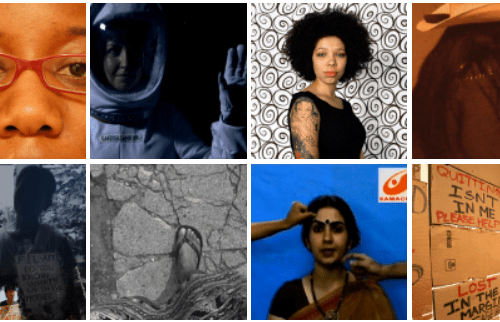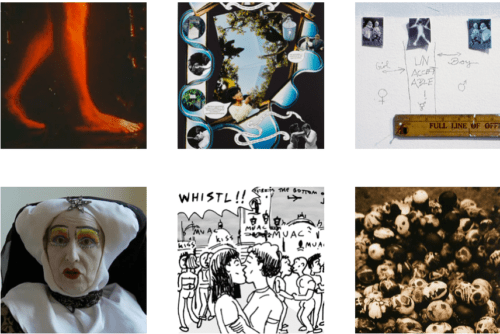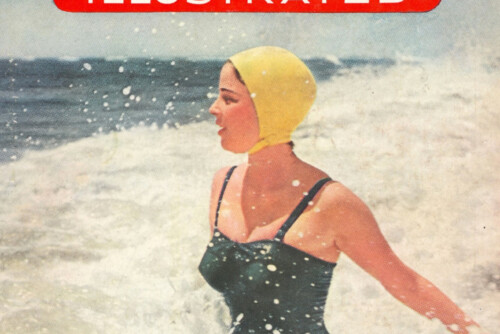“We never talk in this family. Until it’s too late,” my sister exclaimed as we finished a heart to heart. She was right. We don’t speak. We internalize our demons and expect our loved ones to support us without specifying how, or why. Eventually, our armor corrodes and our festering wounds are exposed.
Both my Ghanaian-immigrant father and my Italian American mother carry generations of interpersonal and historical harm, which clash regularly on America’s white supremacist battleground. Their unresolved pain manifests in psychological and mental violence, emotional repression, neglect, and gaslighting. The consequences for me, my sister, and my brother are numerous, nuanced, and include unresolved anger, confusion, and, at times, self-hate. These emotions were cultivated by a childhood devoid of conversations about trauma, family, race, or power. While the details are unique to my family, the process of perpetuating race-, class-, and/or gender-based violence, white supremacist ideas, and other traumas into the next generation is not. Consequently, we all have generational and historical wounds that our elders and ancestors left to fester.
For my family, the festering came from peoples’ unwillingness to listen when someone was in pain, especially if they were responsible for that pain. So, how can we get those who have caused harm to want to listen? From my experience, that openness only comes when the person who was harmed approaches the person who harmed from a place of collective healing, and not solely a need for vengeance.
When I excavated my childhood trauma, I uncovered a crypt of abuse and violence that had taken root in my family tree decades ago. I became an archaeologist. I, dusted, and displayed my discoveries, whether my family was ready or not, to trade in these heirlooms for healing.
I began by feeding my sister information on rape culture and bathing her in sunlit love. I needed to protect her future. I helped her grow, even after realizing there would always be predators lurking, ready to cut her down.
I couldn’t make my sister impervious to harm, but I could try to uproot violence by assisting in the healing of boys and men who are most likely to project their hurt onto her and other women and femmes like her. I talked to my brother: my sixteen-year-old-lookin’-like-a-twenty-year-old, star-athlete brother. The attention and celebrity he garnered scared me because I had witnessed and experienced what happened when star athletes were warped by their heightened status. They became entitled and short-tempered whenever a person challenged rather than succumbed to their manufactured power. I refused to let my brother also mature rotten.
“I wanted to talk to you about this because it has affected a lot of people in our family … including myself.” As I shakily got to the apex of our conversation, my brother went from guarded to shocked. He turned his body toward me, leaned in, and made direct eye contact with me for the first time since we’d sat down. In his big brown eyes, I didn’t see sadness or anger; I saw recognition of my humanity and worth. Using our family experiences as evidence, I made a case for why he needs to grapple with the repercussions of sexual violence and abuse: “If you get a weird feeling like something isn’t right, you have to think of the woman as me or Alyssa and how’d you protect us; that same compassion and respect for women outside of your family is deserved.” My message sunk in, but I could tell he was scared about showing up in his world differently because of the potential ramifications of his actions. He told me, “If anything starts to get too crazy, I usually leave. The cops could come at any minute.”
At that point our conversation began to shift from his responsibility toward women and his privilege as a man in social spaces to the implications of being the sole Black boy navigating a white upper-middle-class world. Although he wields a lot of power and influence because of his social status, racism can quickly render him powerless. I hadn’t thought about that prior to going into this conversation with him. As I processed his statement, he became even more vulnerable: “Alexis, can I ask you something?” “Of course,” I responded. Hesitantly he asked, “If [my ex] wants to get back together … what should I do?” His question was riddled with confusion and anxiety around the potential for him to feel used and be hurt again. A blonde-haired, blue-eyed cheerleader had broken up with my brother right after her vacation to visit her family in Virginia, the same weekend as the Charlottesville “incident.”
“Do you want to know the truth?” I asked. He nodded. Mustering all the kindness I could I said, “She broke up with you after neo-nazis rioted in Virginia, and it’s only after you’ve reached celebrity status through football that she wants you back … She likes the idea of you, and people will use you and manipulate you for their benefit if you are not careful.” His head and my heart sank; I couldn’t let this be where we ended. “What’s something you’ll take away from this conversation?” I asked. He thought for a moment and said, “I have a responsibility to protect the people I love, and people who can’t protect themselves at times … but I also need to protect myself.” I almost started crying because he had heard me. We exchanged “I love you”s, hugged, and parted ways.
As bell hooks writes in All about Love:
The wounded child inside many males is a boy who, when he first spoke his truths, was silenced by paternal sadism, by a patriarchal world that did not want him to claim his true feelings. The wounded child inside many females is a girl who was taught from early childhood that she must become something other than herself, deny her true feelings, in order to attract and please others. When men and women punish each other for truth telling, we reinforce the notion that lies are better. To be loving we willingly hear the other’s truth, and most important, we affirm the value of truth telling. Lies may make people feel better, but they do not help them to know love.1
In the activist spaces I inhabit there tends to be a mutual objective of liberating Black people, but there is also tension between all the ways different members of Black communities simultaneously hold power and are powerless. Unfortunately, the mishandling of these nuances perpetuates the cycles of violence we aim to break. As I navigate my personal healing cycle, I have a greater understanding of how this violence persists through generations and plagues our communities. For example, our organizing becomes siloed where Black women and femmes and Black men are respectively focused on protecting “our own.” Our fixation on the communities with which we identify most blinds us to the full scope of the problem. We cannot isolate issues we seek to address because to do so prevents us from recognizing that our individual healing is tied to our collective healing. The first step toward moving from a cycle of violence to one of healing is self-reflection. It is only after we demonstrate compassion toward ourselves in reflecting on our past that we can show compassion toward others and cultivate a shared healing process.
We are introduced to our “wounded child” through self-reflection. Through healing and loving ourselves we better equip ourselves to love others.
One of the forms this love needs to take is in acknowledging people’s receptivity and capacity for walking alongside us in the healing journey. My brother and I knew we could have the conversation we had because he was the first person to comfort me after I disclosed my childhood trauma six years ago. He didn’t know why I was upset, but he knew I needed to know he loved me, supported me, and that it was going to be okay. His openness, our shared connection, and our willingness to stand in our truths – and see each other’s truths – allowed us to arrive together in a new state of mutual understanding.
In organizing, we need to fully invest in radical love and our shared connections to move together through an ongoing process that is equitably beneficial to Black and brown women, femmes, queer, trans, and gender-nonconforming folks, and men alike. Mass incarceration has provided us with a prime example of what happens when we solely seek vengeance on Black and brown men.2 Vengeance augments the violence and boomerangs itself back into our communities, making us casualties in a cancerous cycle of pain without any opportunity for restoration. We need to process the rage we feel, and we deserve retribution. However, processing these emotions and achieving justice should not come at the expense of another person’s life, whether by incarceration or death. I have learned to respect the place for Black rage and vengeance in healing; nonetheless, I also accept the need to call on the boys and men in my life to stop the cycle from affecting another generation of Black folks. Calling in Black boys and men can alleviate the burden of carrying their compounded trauma by working together toward more compassionate relationships with one another. There is a mountain of individual and collective work we all must do, and it will not be easy, but I have no doubt that we can and will rise to the challenge.
- bell hooks, All about Love: New Visions (New York: William Morrow, 1999), 49. [↩]
- The absence of further discussion of police and law enforcement in this piece is intentional. As a community, we must reclaim the dialogue around healing in relation to violence from the very forces that cause the most harm to all Black people. [↩]
